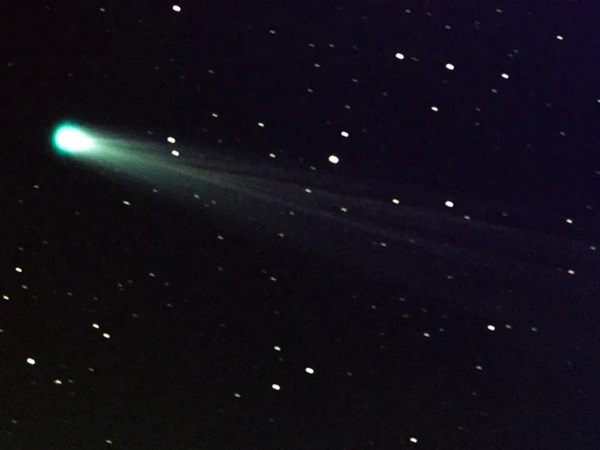BALTIMORE, MD—A rare comet that only visits Earth every 80,000 years will be visible in the evening sky in the Northern Hemisphere this week.
Comet C/2023 A3 Tsuchinshan-ATLAS was 44 million miles from Earth as of this past Saturday and should be visible to the naked eye in the western sky shortly after sunset.
The comet will be visible through October, initially without binoculars but later requiring them. It should be in the vicinity of the bright star Arcturus and the bright planet Venus as they rise in the night sky, and should be between them by Monday evening, October 14th.
Comets, composed of dust and ice, orbit the sun. They are leftovers from the formation of the solar system 4.6 billion years ago and are best known for their long, streaming tails.
“Comets are more fragile than people may realize, thanks to the effects of passing close to the Sun on their internal water ice and volatiles such as carbon monoxide and carbon dioxide,” said NASA astronomer Bill Cooke, who leads the Meteoroid Environment Office at NASA’s Marshall Space Flight Center in Huntsville, Alabama. “Comet Kohoutek, which reached the inner solar system in 1973, broke up while passing too close to the Sun. Comet Ison similarly failed to survive the Sun’s intense heat and gravity during perihelion in 2013.”
Tsuchinshan-ATLAS was discovered last year by the Tsuchinshan, or “Purple Mountain,” Observatory in China and the ATLAS (Asteroid Terrestrial-impact Last Alert System) telescope in South Africa. The comet comes from the Oort Cloud, a barrier of icy debris around our solar system that is well out past Pluto.
Tsuchinshan-ATLAS has a highly elliptical orbit, meaning it will take another 80,000 years before it returns to the inner solar system.
According to experts, the best way to see the comet is to look to the west-southwest about 30 to 45 minutes after sunset. An unobstructed western view is helpful, as the comet will be low on the horizon.
Additional viewing information is available in the video below.
Photo: Comets traveling through the inner solar system aren’t uncommon, but many never survive a close pass by the Sun. Icy comet ISON, photographed here on Nov. 19, 2013, reached solar perihelion later that month – but couldn’t endure the punishing heat and gravity so close to Earth’s parent star and disintegrated. (NASA/MSFC/Aaron Kingery)
This article was written with the assistance of AI and reviewed by a human editor.
Do you value local journalism? Support NottinghamMD.com today.

